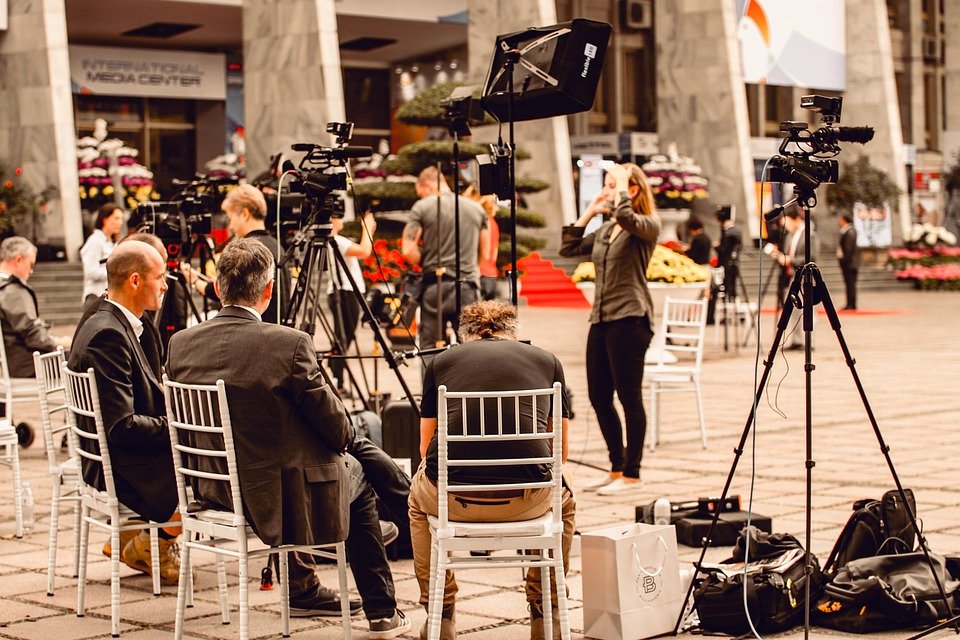Today it’s more important than ever to convey concise messaging about your brand when speaking with press, analysts, and influencers. As the pool of journalists continues to shrink, making the most of your opportunity during an interview is crucial to securing coverage. Media are looking to be authoritative and objective, inform their audiences, and drive site traffic and readership. It’s your job to help them do that, while presenting a concise and compelling narrative. To help you accomplish that, we’ve put together a list of 15 media training tips to consider when talking with technology press. Let’s dive in.
1. Don’t forget to set the ground rules. If your PR team is on the call with you, they should help do this. But if not, ask how much time you have, confirm any embargoes of information if applicable, and outline what you intend to cover.
2. Never, under any circumstance, let an interviewer make you upset. If you do, that will become the story. Always take the high road.
3. NOTHING is off the record. If you don’t want to see it in print – don’t say it. Once it’s out of your mouth, you can’t put it back in. (And saying something, and then asking for a retraction, makes you look unprofessional.)
4. If you don’t know the answer to a question, that’s okay, just say so. Journalists just want to know they’ll get an answer. Journalists are not (traditionally) trying to trick or deceive you. For example, this would be a great response: “Great question. I don’t want to give you inaccurate information, so let me (or my PR team) come back to you with that information following the meeting.” Or, “That’s a great question. I don’t have that answer. Let me dig in and come back to you with that information.”
5. Remember that your PR team is there to protect you, help shape messages, and ensure we build strong relationships with reporters that can help us generate future stories. If your PR person interrupts you, they’re trying to help protect you and steer the story – let them – that’s what we’re there for.
6. As a rule, don’t talk about competitors proactively or even reactively if it can be avoided. You’re there to talk about your company. If pressed, simply say, “It wouldn’t be appropriate for me to speak for them, but I can tell you what we do….” and bridge to your messages and story. If you are pressed on competitors, only talk about what you absolutely know and work to keep it brief and positive. (Journalists would love to hear you slam the competition, but it’s not a good look for a confident brand.)
7. Don’t feel compelled to “fill the space.” The more you say, the less chance you have of them picking up what you truly want to say. Stick to your key messages and keep “bridging” back to them over and over – don’t just answer the question they asked and let them take you anywhere they like with the interview. No matter how crazy the question, just use it to get you back to your key messages. Some journalists love to leave big pauses, hoping you will fill the air with random comments (random comments lead to poor messaging).
8. An interview is not a confessional. Just because you know the answer or information, doesn’t mean you should share it. You’ll always know more than you’ll ever say.
9. Use simple language. Don’t forget these reporters are generally not experts in every field or on every topic. While they may know the space well, they don’t know company acronyms or “internal speak.” Make sure you’re checking to ensure you were clear in your explanations. A confused reporter will write a confusing story.
10. Be enthusiastic when speaking with a reporter. Your energy sets the tone for a discussion. If you sound bored, the reporter will be bored and not think the topic or news is exciting.
11. Body language matters. If you look irritated, don’t make eye contact, have no movement of expression, the journalist will mirror that vibe. Some journalists are very stoic but do your best to engage with them and turn the interview into a “fireside” type discussion. Remember enthusiasm is contagious. And don’t forget to be an active listener.
12. Your personal and professional background is important, but don’t get carried away. Journalists already know that on paper you’re brilliant (that’s why they’re talking to you). When talking about your accomplishments or history, keep it tight, to the point and short (unless they specifically ask and press to dive into the topic).
13. With the current global conditions, video conferencing is playing a prominent role in press interviews. Be sure you have a good video conferencing call set up. Be in a quiet location with good lighting and good connectivity. Understand if the call is being recorded or not. Consider your physical background (and what you’re wearing if the call is being recorded for a podcast). Understand when you are and are not on mute. If you have others on the call from your team and they’re not actively participating, consider having them mute and turning off video (it can be distracting).
14. If the interviewer asks a negative question, don’t repeat it. This can be a tactic to quote you saying something negative. (This rarely happens, but worth being aware of.)
15. Know who you’re talking to. Your PR team should provide some background information. Be sure to read it. It should give you examples of their work and allow you to make a more personal connection. And remember to be appreciative of the opportunity to speak with the reporter.
These tips are just the starting point for media training. It’s often a best practice to engage your PR team with formal media training. If you want to learn more about our full or half-day media training sessions, reach out and let’s chat.

